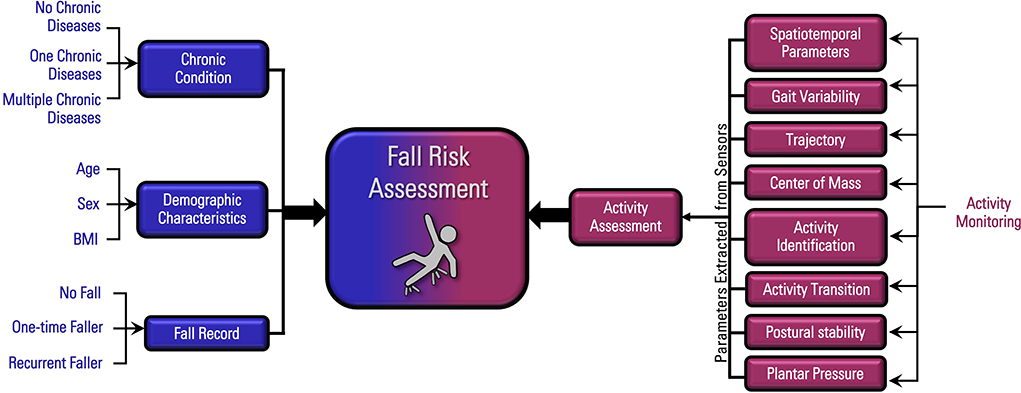Some Of Dementia Fall Risk
Some Of Dementia Fall Risk
Blog Article
A Biased View of Dementia Fall Risk
Table of ContentsThe 4-Minute Rule for Dementia Fall RiskSome Known Incorrect Statements About Dementia Fall Risk The Single Strategy To Use For Dementia Fall RiskDementia Fall Risk - Questions
An autumn threat assessment checks to see how most likely it is that you will certainly drop. The assessment normally consists of: This consists of a collection of inquiries concerning your total health and wellness and if you've had previous falls or troubles with balance, standing, and/or walking.Treatments are suggestions that may lower your risk of falling. STEADI includes 3 actions: you for your danger of falling for your risk elements that can be improved to attempt to stop falls (for example, balance problems, impaired vision) to minimize your risk of falling by utilizing efficient strategies (for example, giving education and sources), you may be asked a number of concerns consisting of: Have you dropped in the previous year? Are you fretted concerning falling?
After that you'll take a seat again. Your service provider will inspect how much time it takes you to do this. If it takes you 12 seconds or more, it may mean you go to greater threat for a loss. This examination checks stamina and balance. You'll being in a chair with your arms went across over your chest.
The positions will get more difficult as you go. Stand with your feet side-by-side. Relocate one foot halfway forward, so the instep is touching the huge toe of your other foot. Move one foot totally in front of the various other, so the toes are touching the heel of your various other foot.
Dementia Fall Risk Things To Know Before You Get This
A lot of falls happen as a result of numerous contributing elements; for that reason, managing the danger of falling starts with recognizing the variables that contribute to drop danger - Dementia Fall Risk. Several of the most appropriate risk aspects include: Background of previous fallsChronic clinical conditionsAcute illnessImpaired stride and equilibrium, reduced extremity weaknessCognitive impairmentChanges in visionCertain risky drugs and polypharmacyEnvironmental elements can also enhance the danger for falls, consisting of: Insufficient lightingUneven or harmed flooringWet or slippery floorsMissing or harmed handrails and grab barsDamaged or incorrectly equipped equipment, such as beds, mobility devices, or walkersImproper usage of assistive devicesInadequate supervision of the individuals living in the NF, consisting of those that show aggressive behaviorsA effective loss threat administration program needs a detailed medical assessment, with input from all members of the interdisciplinary team

The care strategy must additionally consist here of treatments that are system-based, such as those that promote a risk-free environment (ideal lights, hand rails, grab bars, and so on). The efficiency of the interventions ought to be reviewed regularly, and the care strategy modified as needed to show changes in the autumn danger assessment. Applying an autumn risk administration system using evidence-based ideal practice can lower the prevalence of falls in the NF, while limiting the potential for fall-related injuries.
Dementia Fall Risk Can Be Fun For Anyone
The AGS/BGS standard recommends evaluating all adults matured 65 years and older for autumn risk each year. This testing includes asking individuals whether they have dropped 2 or more times in the past year or sought medical attention for a fall, or, if they have not dropped, whether they really feel unsteady when strolling.
Individuals that have actually fallen when without injury ought to have their balance and gait examined; those with stride or balance irregularities must receive extra assessment. A history of 1 autumn without injury and without stride or balance problems does not necessitate more assessment beyond continued yearly loss risk testing. Dementia Fall Risk. web link A fall threat evaluation is needed as part of the Welcome to Medicare evaluation

Fascination About Dementia Fall Risk
Recording a falls background is just one of the quality signs for fall avoidance and management. A vital part of threat evaluation is a medication review. A number of courses of drugs enhance autumn danger (Table 2). copyright medications in certain are independent forecasters of falls. These medicines tend to be sedating, change the sensorium, and harm balance and stride.
Postural hypotension can usually be eased by reducing the dose of blood pressurelowering medications and/or quiting medicines that have orthostatic hypotension as a side impact. Use above-the-knee assistance pipe and copulating the head of the bed raised may additionally lower postural reductions in blood stress. The preferred aspects of a fall-focused checkup are revealed in Box 1.
-copy-5.jpg)
A TUG time higher than or equal to 12 seconds recommends high autumn risk. The 30-Second Chair Stand examination analyzes lower extremity strength and equilibrium. Being unable to stand from a chair of knee height without making use of one's arms suggests raised loss risk. The 4-Stage Equilibrium examination evaluates fixed equilibrium by having the individual stand in 4 positions, each progressively extra difficult.
Report this page